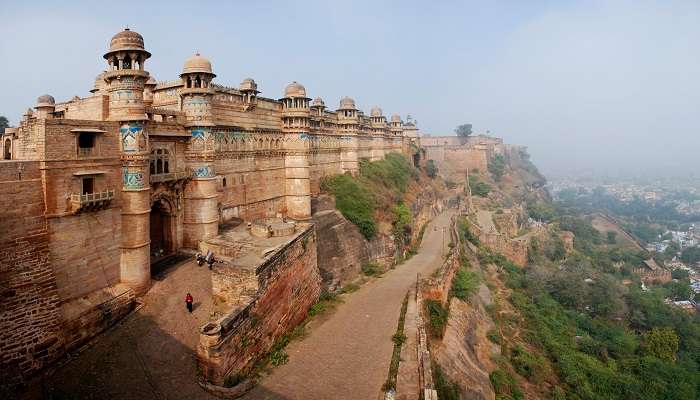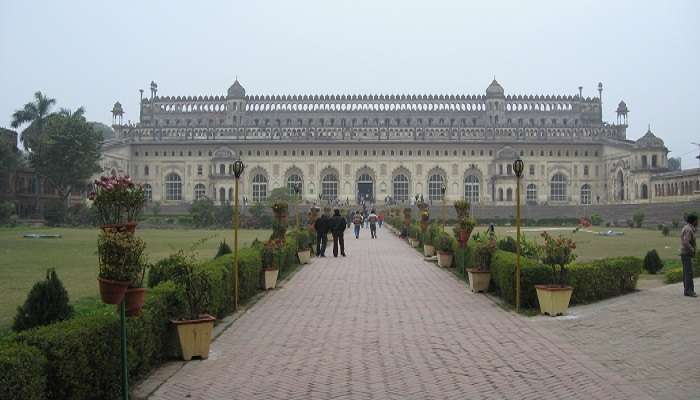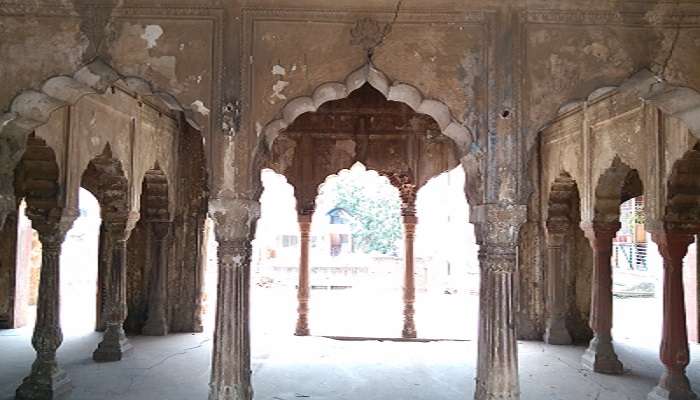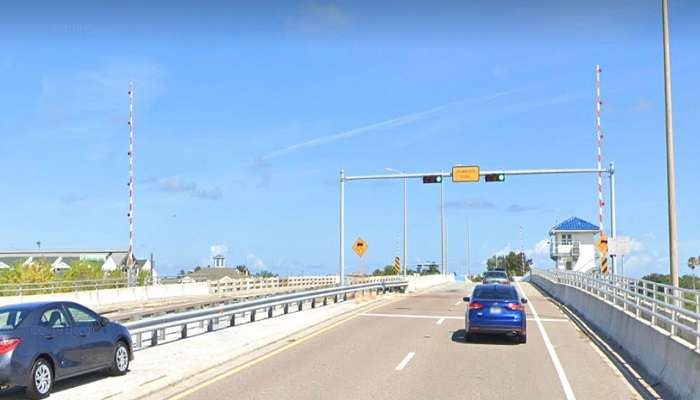Alambagh Is A Hidden Gem Of Lucknow Filled With Rich Heritage

Alambagh is one of the most prominent residential and commercial areas of Lucknow and happens to be a part of the Lucknow Cantonment constituency. Also one of the city’s most densely populated areas, it is located near Kanpur road in the southern part of Lucknow and is a very important marketplace for people from neighbouring towns. It is well known for its historic palace, and it was one of the many areas that played a role during the sepoy mutiny of 1857. It later became a military command centre for the Britishers.
About Alambagh And Its History

A part of the Lucknow Cantonment constituency in the southern part of Lucknow, Alambagh is one of the city’s prime residential and commercial areas that is also known for its prestigious schools. It is situated on Kanpur Road and is a major marketplace for people from within and around Alambagh; farmers from villages around the area come here daily to sell their produce to distributors and retailers, then sold across Lucknow.
Alambagh was one of the cities affected during India’s first war of independence in 1857, when it was converted into a fort under the command of General Outram. The mutineers attacked it several times until Sir Colin Campbell came to fight Lucknow in March 1858. Following this war, which witnessed the loss of the mutineers, the area was turned into a military command centre for Lucknow and its neighbouring regions. Besides being a residential and commercial centre, Alambagh is also known for its palace, mosque, and beautiful garden.
Must Read: Places To Visit In Lucknow
About The Alambagh Palace

The Alambagh Palace is one attraction you cannot miss when visiting Alambagh. This palace, also called Kothi Alamara, lies on the Lucknow-Kanpur highway and was constructed in the mid-19th century by Nawab Wajid Ali Shah for his wife Alam Ara. Its premises comprised a lush green garden, and one of the palace’s most notable features is its massive gateway called the Kothi Alamara Gateway, designed by Chhote Khan. The gateway now doubles as the entryway for the Chander Nagar Colony. The palace is two storeys high and is made using lakhori bricks, as is its gateway. Its architecture is a mix of the Mughal and European styles of architecture. The building features huge rooms and halls with high ceilings. Moreover, you could see the remnants of the floral designs that once adorned the palace’s interior walls.
However, not too long after it was constructed, the Nawab was exiled and freedom fighters camped out in the palace’s garden, converting it into a military post. Alambagh Palace suffered some damage during the Revolt of 1857 as the Britishers eventually overpowered the mutineers; it was captured by General Havelock and made into a hospital for injured British soldiers. His grave still lies within the palace’s complex. Alambagh Palace was also where several refugees from Pakistan took refuge following the Partition in 1947. Unfortunately, the palace is in ruins today, and there have been no concrete attempts to restore it to its former glory. In fact, many vendors have set up shop close to this historic structure.
Things To Do In And Around Alambagh

Alambagh might be a relatively smaller place but there are a few things you can see and do here, as well as in nearby areas, and they are as follows:
- You must visit the very popular Alambagh Market, which lies on the Lucknow-Kanpur road. It is not only a massive but also a very well-organised market; it stretches from Teri Pulia Bazar to Chandar Nagar and from Krishna Nagar to Singhar Nagar. There are a plethora of shops here that sell a wide variety of items, such as fruits, vegetables, spices, clothes, homeware goods, jewellery, gold, and much more.
- Eco Garden is a must-visit when travelling to Alambagh since it is one of the most famous attractions in all of Lucknow. Spread out across an area of 112 acres, this beautiful garden is great for taking an evening stroll or for simply sitting on the grass and reading. Inside the garden are over 500 bronze statues of animals as well as fountains that make it a good place for taking photographs.
- All of Lucknow is not only famous for its rich history and heritage but also for its delicious food. When you’re visiting Alambagh, make sure to try out some of its yummy street food that will surely leave you wanting more. You would find many stalls selling delicacies like chhole bhature, kebabs, sheer korma, kulcha nihari, chaat, biryani, kheer and so much more that you would be left licking your fingers.
Suggested Read: Places To Visit In Uttar Pradesh
How To Reach & Best Time To Visit

Getting to Alambagh is quite easy since it lies within Lucknow. If you are visiting from a nearby city, you always have the option of bringing your own car or hiring a taxi since the city is well connected to Kanpur, Sitapur, and other districts. Alambagh also has its bus depot, with regular buses coming in from neighbouring cities and districts. If you decide to take a flight, you can land at the Chaudhary Charan Singh Airport in Lucknow which is approximately 7 km away and take a taxi. Another option is to take the train to Lucknow’s railway station which is less than 5 km away. It would take a maximum of 20 minutes to get to Alambagh from there.
There are rickshaws and autorickshaws in Alambagh, which make it very easy to get from one place to another within the area. Since summertime in Alambagh usually brings about high temperatures which would make sightseeing unpleasant, it is best to visit between the winter months of October and March. This time of the year experiences cool weather which is ideal for sightseeing and other outdoor activities.
Further Read: Street Food In Lucknow
After reading this extensive guide on Alambagh and everything you can see and do around here, you should be ready to plan your trip to this little area with rich heritage and culture. Given its proximity to other famous cities and districts in the state, planning a trip to Uttar Pradesh would be an excellent idea since there is no shortage of wonderful things to discover here. So go online now and curate the perfect holiday for you and your family!
For our editorial codes of conduct and copyright disclaimer, please click here.
Cover Image Credit: Tom D’Arby for Wikimedia Commons
Frequently Asked Questions About Alambagh
What are the opening hours of the Eco Garden in Alambagh?
Alambagh’s Eco Garden is open from Monday to Sunday, from 11:00 AM to 9:00 PM.
Is there a metro to get around in Alambagh?
Yes, there is a metro that you can take to get around Alambagh and also Lucknow. Moreover, it is also connected to the airport in Lucknow, making your commute much more convenient and cheap.
How many days are enough to spend in Alambagh?
Alambagh is primarily a residential and commercial area with not too many tourist attractions. You would only need 2 days to see all of Alambagh, but you can always stay longer so that you don’t feel rushed when discovering all that it has.
What is the most popular attraction in Lucknow?
Lucknow is renowned for its many historical attractions, architectural wonders as well as delectable cuisine. Its most famous attraction is perhaps Bara Imambara, a beautiful shrine built by Shia Muslims during the late 18th century.
Is it worth visiting the Hazratganj Market in Lucknow?
Yes, it is definitely worth visiting the renowned Hazratganj Market in Lucknow which is the city’s main shopping destination. It was built in the early 19th century by Nawab Nasir-ud-Din Haidar Shah and its name was later changed to what it is today to honour Nawab Amjad Ali Shah who was also known as ‘Hazrat.’ You would find shops selling chikankari items here which is an intricate form of embroidery that originated in Lucknow itself.
People Also Read:
Things To Do In Varanasi Tourist Places In Kanpur Resorts In Agra

Innovative Content Writer Focused on Producing High quality, Original Content that drives traffic and engages readers. Experienced in Content strategy and analytics to measure content performance using tools such as SQL, Power BI, Excel.











